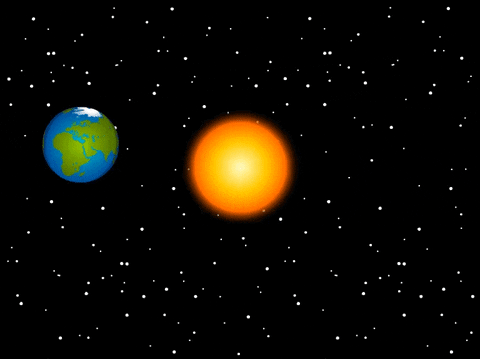When you think of a day, you usually think of a cycle from day to night. This is called a solar day. On Earth, the solar day is approximately 24 hours. However, the Earth's orbit is elliptical, meaning it is not a complete circle. This means that some solar days on Earth are 24 hours to a few minutes longer and some are a few minutes shorter.
Earth days are 23,934 hours long.
Another way to measure a day is to count the time it takes for a planet to fully rotate and make a complete rotation. This is called cidrell day. On Earth, a cedral day is approximately 23 hours and 56 minutes long.
We know how long the Earth's day is, but what about the other planets in our solar system? How long does it take for these planets to complete one revolution? And what is the best way to answer this question?
Let's look at some options.
Option 1: One paragraph
We can write a paragraph about how many days it takes to travel to other planets.
Earth says it's not very helpful.
Mercury lasts 1,408 hours a day and Venus 5,832 hours. It is very similar to Earth and Mars. It takes 24 hours to complete one revolution on Earth and 25 hours on Mars. Gas giants move really fast. Jupiter takes only 10 hours to complete one cycle. Saturn takes 11 hours, Uranus 17 hours and Neptune 16 hours.
It took some time to read this paragraph, and it is difficult to find all the numbers. Let's see what it looks like if we put it on the table.
Option 2: A table
Earth says, Mmm, that's fine.
Planet
Day length
Mercury 1,408 hours
Venus 5,832 hours
Earth 24 hours
Mars 25 hours
Jupiter 10 hours
Saturn 11 hours
Uranus 17 hours
Neptune 16 hours
It's a little better. We can look up and down the numbers and compare them more easily. But wouldn't it be nice if we could see how big these differences are?
Let's make a graph with these numbers!
By Nasa
جب آپ ایک دن کے بارے میں سوچتے ہیں، تو آپ عام طور پر دن کے وقت سے رات کے وقت کے ایک چکر کے بارے میں سوچتے ہیں۔ اسے شمسی دن کہا جاتا ہے۔ زمین پر، شمسی دن تقریبا 24 گھنٹے ہے. تاہم، زمین کا مدار بیضوی ہے، یعنی یہ مکمل دائرہ نہیں ہے۔ اس کا مطلب ہے کہ زمین پر کچھ شمسی دن 24 گھنٹے سے چند منٹ لمبے ہوتے ہیں اور کچھ چند منٹ چھوٹے ہوتے ہیں۔
زمینی دن 23.934 گھنٹے طویل ہیں۔
ایک دن کی پیمائش کرنے کا دوسرا طریقہ یہ ہے کہ کسی سیارے کو مکمل طور پر گھومنے اور ایک مکمل گردش کرنے میں لگنے والے وقت کی گنتی کریں۔ اس کو سائیڈریل ڈے کہتے ہیں۔ زمین پر، ایک سایڈریل دن تقریباً 23 گھنٹے اور 56 منٹ کا ہوتا ہے۔
ہم جانتے ہیں کہ زمین کا دن کتنا لمبا ہے، لیکن ہمارے نظام شمسی میں دوسرے سیاروں کا کیا حال ہے؟ ان سیاروں کو ایک مکمل گردش کرنے میں کتنا وقت لگتا ہے؟ اور اس سوال کا جواب دکھانے کا بہترین طریقہ کیا ہے؟
آئیے چند اختیارات پر نظر ڈالتے ہیں۔
آپشن 1: ایک پیراگراف
ہم ایک پیراگراف لکھ سکتے ہیں کہ دوسرے سیاروں پر کتنے دن چلتے ہیں۔
زمین کہتی ہے، یہ زیادہ مددگار نہیں ہے۔
عطارد پر ایک دن 1,408 گھنٹے اور زہرہ پر 5,832 گھنٹے رہتا ہے۔ زمین اور مریخ پر یہ بہت مماثل ہے۔ زمین کو ایک چکر مکمل کرنے میں 24 گھنٹے لگتے ہیں اور مریخ کو 25 گھنٹے لگتے ہیں۔ گیس کے جنات واقعی تیزی سے گھومتے ہیں۔ مشتری کو ایک چکر مکمل کرنے میں صرف 10 گھنٹے لگتے ہیں۔ زحل کو 11 گھنٹے، یورینس کو 17 گھنٹے اور نیپچون کو 16 گھنٹے لگتے ہیں۔
اس پیراگراف کو پڑھنے میں کچھ وقت لگا، اور تمام نمبر تلاش کرنا مشکل ہے۔ آئیے دیکھتے ہیں کہ اگر ہم اسے ٹیبل میں رکھتے ہیں تو یہ کیسا لگتا ہے۔
آپشن 2: ایک میز
زمین کہتی ہے، مم، یہ ٹھیک ہے۔
سیارہ
دن کی لمبائی
مرکری 1,408 گھنٹے
زہرہ 5,832 گھنٹے
زمین 24 گھنٹے
مریخ 25 گھنٹے
مشتری 10 گھنٹے
زحل 11 گھنٹے
یورینس 17 گھنٹے
نیپچون 16 گھنٹے
یہ تھوڑا سا بہتر ہے۔ ہم نمبروں کو اوپر اور نیچے دیکھ سکتے ہیں اور ان کا زیادہ آسانی سے موازنہ کر سکتے ہیں۔ لیکن کیا یہ اچھا نہیں ہوگا اگر ہم دیکھ سکیں کہ یہ اختلافات کتنے بڑے ہیں؟
آئیے ان نمبروں کے ساتھ ایک گراف بنائیں!
By Nasa
